Setting Up the OData Integration with Business Intelligence Tools
Learn how to configure the OData integration with popular business intelligence tools to streamline data access and enhance analytics capabilities.
Video Tutorial for Microsoft Power BI and Tableau
In the following video tutorial, you can learn how to enable the OData integration with Microsoft Power BI and Tableau.
Microsoft Power BI
Microsoft Power BI provides the OData Feed connector that allows you to import your saved searches into the tool. To learn more about the connector, refer to the Microsoft Power BI documentation.
To connect to an OData data source in Microsoft Power BI, follow these steps:
-
In the Get Data overlay, search for the OData Feed connector, then click Connect.
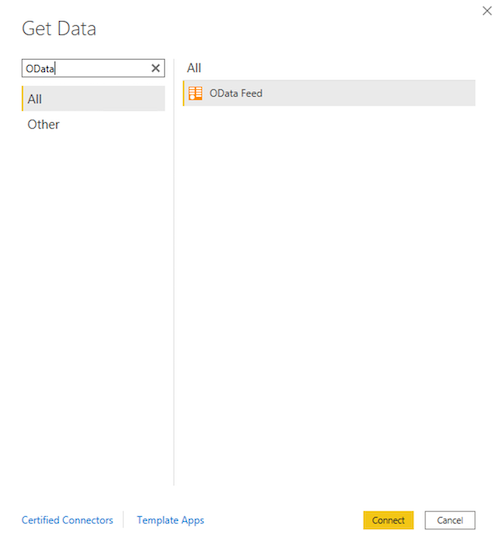
Searching for the 'OData Feed' Connector
-
In the overlay that appears, select Basic, enter the URL of the OData endpoint, then click OK. To view available OData endpoints, see OData Endpoints.

Entering the URL of the OData API Endpoint in the Configuration of the OData Feed Connector
-
If this is your first time connecting to the OData Feed, you need to select an authentication method. In the sidebar, select Basic, then enter your authentication details:
- User name:
apitoken - Password: Your API token. You can get an API token by creating a technical user. For more information, see Technical Users.
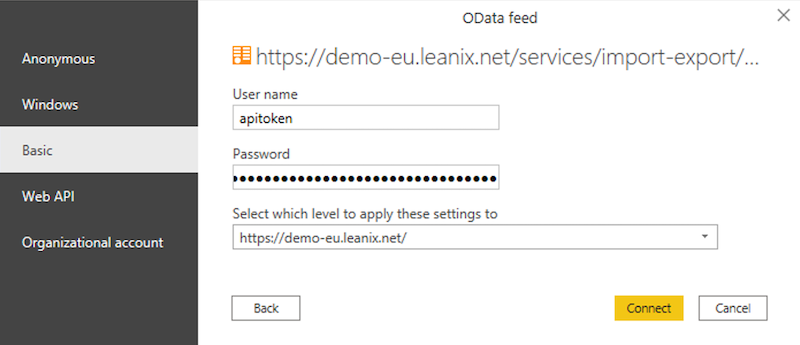
Configuring Basic Authentication for the OData Feed Connector
- User name:
The connection should be established. You should see a list of exposed saved searches.
Note
Due to OData limitations, the names of your saved searches are normalized.
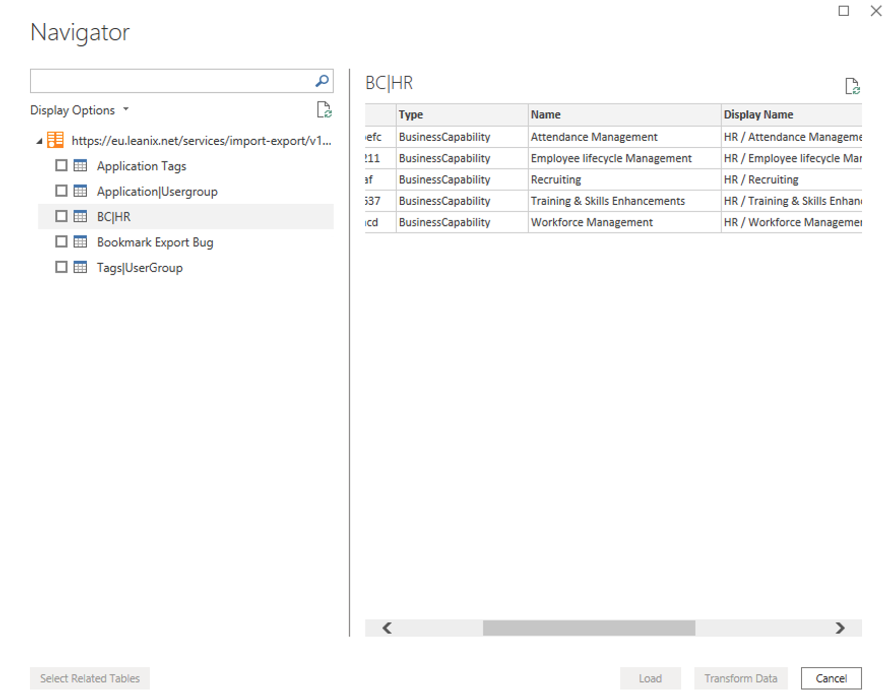
Viewing Imported Saved Searches in Microsoft Power BI
You can load or transform the imported data as needed.

Imported Saved Searches in Table View in Microsoft Power BI
To improve stability when loading and refreshing data, disable the parallel loading of tables in Microsoft Power BI. To do so, navigate to File > Options and Settings > Options > CURRENT FILE > Data Load, and unselect Enable parallel loading of tables.
Changing Authentication Credentials for an OData Feed
If you replace the API token of your Technical User or delete the Technical User, you need to update credentials in all your integrations where the token is used.
To change credentials in Microsoft Power BI, follow these steps:
-
On the menu bar, select File, then select Options and settings.
-
Select Data source settings.
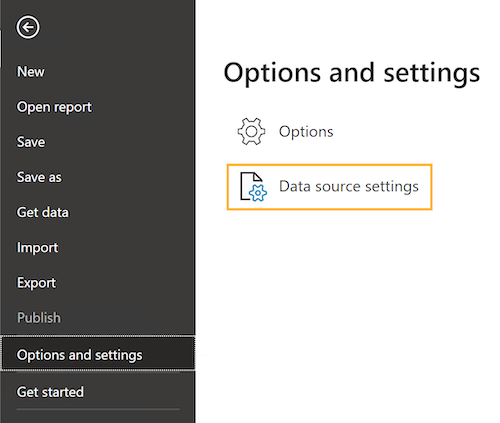
Selecting the 'Data Source Settings' Option in Microsoft Power BI
-
Select your domain, then click Edit Permissions.
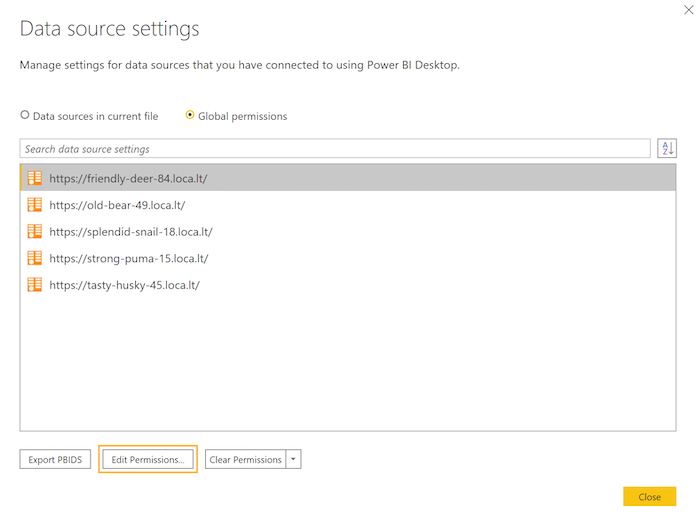
Selecting 'Edit Permissions' in the Data Source Settings
-
In the overlay that appears, click Edit, then click OK.
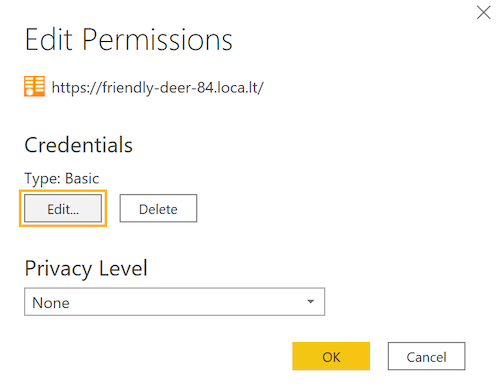
Navigating to the Page for Editing Credentials for an OData Feed
-
In the overlay that appears, navigate to the Basic tab, enter your new API token, then click Save.
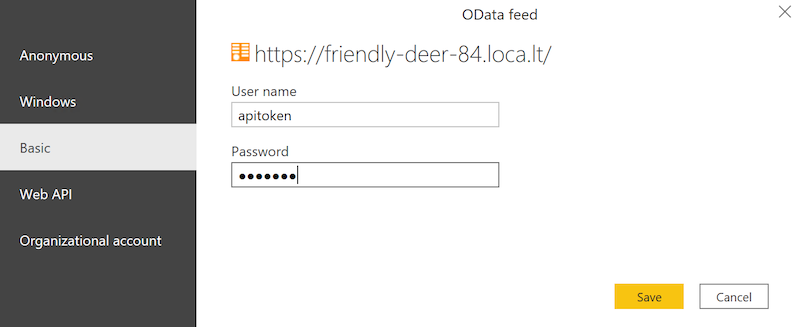
Entering a New API Token in the Configuration of the OData Feed Connector
Using Dataflows
When importing large volumes of data into Microsoft Power BI, you might encounter issues in retrieving complete datasets. Using dataflows can help address these issues. Consider using dataflows when:
- You need to combine data from multiple sources.
- You need to transform data before loading it into reports.
- You're dealing with large datasets and need efficient methods for processing and storing the data.
- You need to regularly update your data, but only want to refresh the new or modified data, not the entire dataset.
- You want to create reusable and centralized data models for multiple reports.
To learn how to create dataflows, refer to the Microsoft documentation.
Tableau
To import your saved searches into Tableau, connect Tableau to an OData data source. For instructions, refer to the Tableau documentation.
In Tableau, enter the following credentials for the OData endpoint:
- Server: The URL of the OData endpoint. To view available endpoints, see OData Endpoints.
- Authentication: Select Username and Password.
- Username:
apitoken - Password: Your API token. You can get an API token by creating a technical user. For more information, see Technical Users.
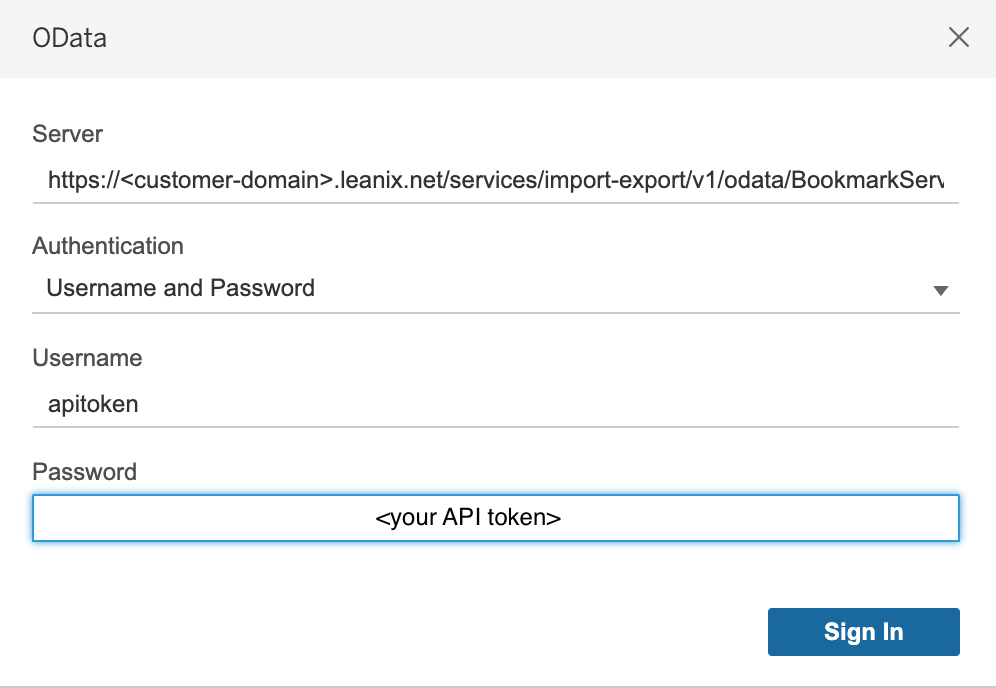
Entering Authentication Details for OData Connection
The connection should be established. You should see a list of your saved searches.
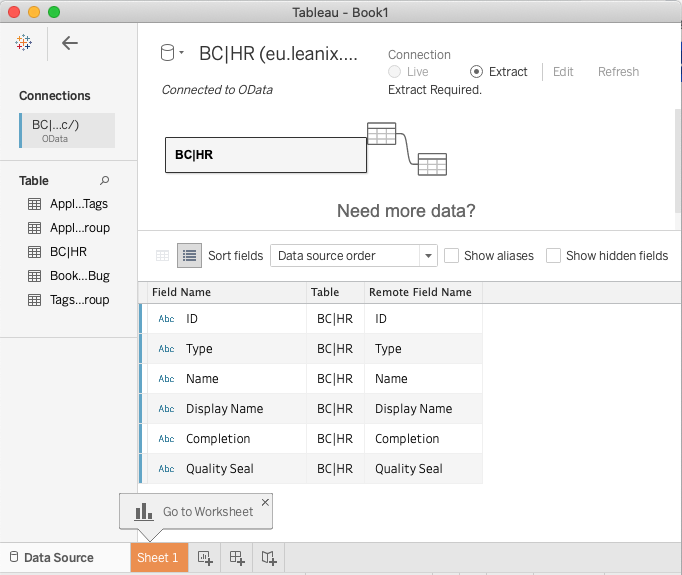
Viewing Imported Saved Searches in Tableau
You can drag and drop the exported fields of your searches within Sheets.
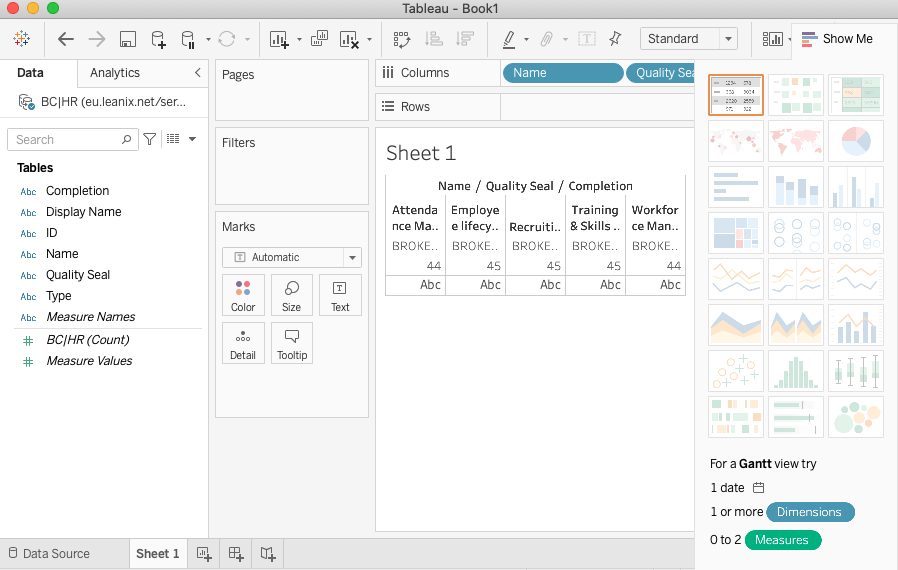
Viewing Saved Searches Within Sheets in Tableau
SAP Tools
If you use SAP tools such as SAP Analytics Cloud or SAP Datasphere, do the following:
-
Rename your saved searches to use the saved search ID as the name. You can obtain this ID by navigating to the saved search page and copying the ID from the page URL.
-
To import saved searches, use the BookmarkDataService.svc endpoint, which supports technical field keys.
https://{SUBDOMAIN}.leanix.net/services/import-export/v1/odata/BookmarkDataService.svc/
Updated 2 months ago
